Last Updated on 15 September 2025 by Greg Brookes

Looking for an advanced kettlebell movement that hits your core, shoulders, and hips all at once? The kettlebell windmill is an underrated gem that demands strength, control, and mobility. It builds resilience and improves movement quality in a way few lifts can match.
In this article, I’ll walk you through everything you need to know to master the kettlebell windmill: from what it is and why it matters, to progressions, technique, common mistakes, and smart programming tips.
Master the Kettlebell Windmill and 51 more exercises
Download my free 52 Illustrated Kettlebell Exercises PDF and avoid common mistakes.

Trusted by 65,000+ kettlebell readers.
What is the Kettlebell Windmill?
The kettlebell windmill is a full-body movement that combines rotation, lateral flexion, and overhead stability. Performed by holding a kettlebell overhead and hinging sideways through the hips, it trains both strength and mobility.
While it’s not a max-strength lift like the deadlift or military press, the windmill builds deep core strength and shoulder control that translates to real-world function and injury prevention.
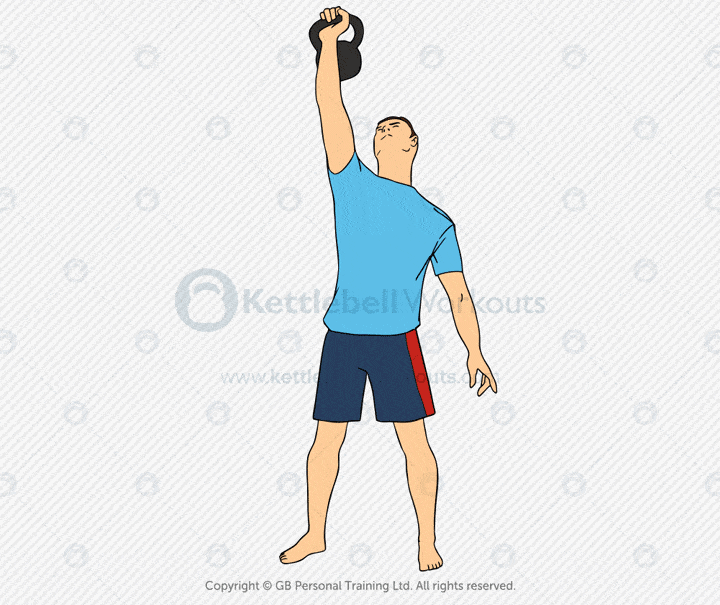
Variations include:
- Kettlebell in the top hand (standard version)
- Kettlebell in the bottom hand
- Kettlebells in both hands (advanced)
- Dumbbell windmill as an alternative
You can perform it with a straight front leg or a slight bend depending on your flexibility.
Why It Matters
The kettlebell windmill is one of the few lifts that challenges the body in the frontal and transverse planes. It strengthens your ability to resist unwanted rotation, improves posture, and increases range of motion in the hips and thoracic spine.
Practising this exercise also enhances your control during other kettlebell movements like overhead presses, Turkish get-ups, and snatches.
Key Benefits:
- Increases hip and hamstring flexibility
- Strengthens the oblique and spinal stabilisers
- Enhances shoulder mobility and stability
- Improves balance and body awareness
Muscles Worked
The windmill activates stabilisers and movers throughout the body. You’re not just moving weight, you’re coordinating multiple joints under tension.
Here are the primary muscles involved:
- Obliques and transverse abdominis
- Erector spinae and multifidus
- Rotator cuff and scapular stabilisers
- Gluteus medius and maximus
- Deltoids and triceps (top arm)
- Hamstrings and adductors
Expect deep core activation, especially on the side opposite the loaded arm.
Step-by-Step Instructions
Here’s how to perform the top-hand version of the kettlebell windmill:
- Stand with feet about double hip-width apart, both pointing 45 degrees away from the kettlebell side.
- Clean and press the kettlebell overhead, locking out the elbow and keeping your arm vertical.
- Push your hips out in the same direction of the kettlebell.
- Slowly lower the torso, sliding your bottom hand down your leg toward the floor.
- Keep eyes on the kettlebell at all times.
- Only go as low as your flexibility allows with a straight back.
- Drive through your hips and core to return to standing.
Tip: If you can’t touch the floor without rounding your spine, bend the front knee slightly or shorten your range.
Watch a Video of the Kettlebell Windmill
Common Mistakes to Avoid
Many people struggle with this exercise because they rush or lack control. Watch out for these issues:
- Rounding the spine – Always hinge at the hips, not the waist.
- Letting the kettlebell drift forward – Keep it vertical above the shoulder.
- Twisting the torso – Aim to rotate only through the thoracic spine.
- Bending the lead knee excessively – Keep a strong posterior chain stretch.
- Looking away from the kettlebell – Keep your gaze fixed upward.
Coach’s Insight: Greg’s Take
I’ve used the windmill for years to bulletproof my shoulders and help clients unlock stiff hips. One client couldn’t touch their shin when we started. After four weeks of progressive windmills and hip drills, they were palms-to-floor, with a kettlebell overhead.
It’s a reminder that smart mobility work builds real, lasting strength.
Still working on your Windmill? Get the free 52 Exercises PDF.
Fix your form and train smarter with my illustrated guide.

Warm-Up Drills
The windmill demands mobility and control. These drills help prep the body:
- Lateral hip hinges with reach – mimics the movement unloaded
- Overhead kettlebell hold – stabilises shoulder position
Use these to activate relevant tissues and dial in your movement before loading up.
Progressions and Regressions
Progress slowly and only load the movement once your body is ready. Here’s a smart progression strategy:
1. Bodyweight Windmill
Master the unloaded pattern first. Focus on alignment and hip control.

2. Overhead Kettlebell Hold
Stand tall holding the kettlebell overhead for 30–60 seconds to prep your shoulder stabilisers.
3. Bottom-Hand Windmill
Keep the kettlebell in the bottom hand while mimicking the full motion.
4. Top-Hand Windmill
Now load the movement as intended with the kettlebell in the top hand. Move slowly.
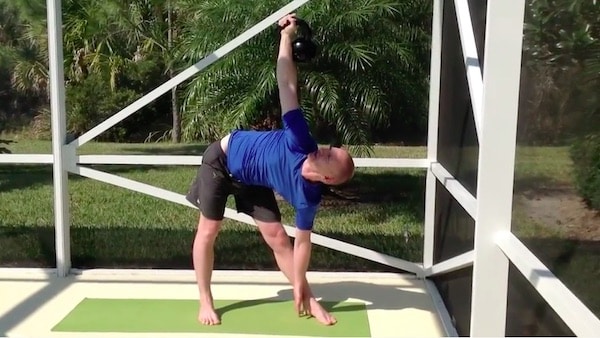
5. Double Kettlebell Windmill
Add load to the bottom hand as well. This progression increases core demand and balance.
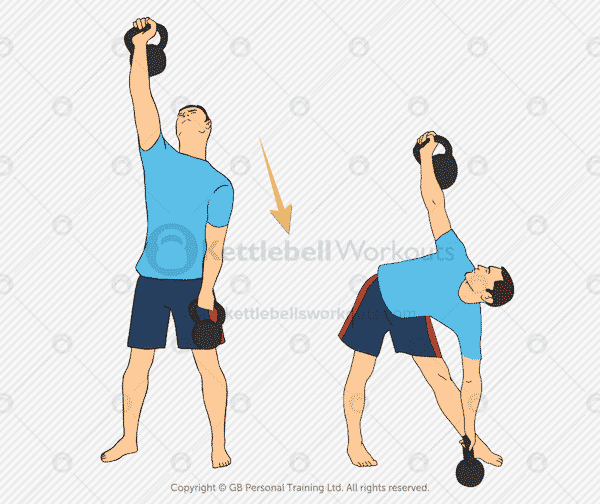
Programming Tips and Reps
This is a control-focused exercise. Keep the weight light to moderate and focus on form.
Sample Routine:
- Windmill x 5 reps per side
- Rest 60 seconds
- Repeat 2–3 rounds
Use it as:
- A warm-up for overhead or core-intensive days
- A mobility builder on off-days
- A finisher to reinforce tension and posture
Comparison to Similar Movement
The kettlebell windmill versus Turkish get-up:
- Windmill isolates lateral hip hinge and shoulder control
- Get-up trains more full-body coordination
- Windmill places greater emphasis on static stability and rotation
They’re complementary, so use both.
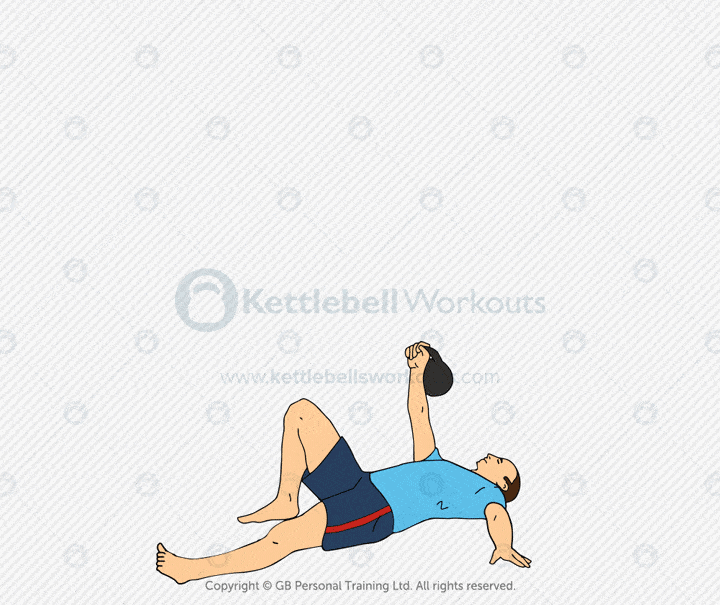
Related Exercises
Here are a few similar or preparatory movements:
- Kettlebell overhead hold – foundational for shoulder control
- Side plank reach – mimics core tension
- Lateral hinge – movement pattern primer
- Bottoms-up press – shoulder stabiliser challenge
Want More Smart Kettlebell Training?
Develop mobility and stability with other rotational lifts in my kettlebell exercises guide.
Frequently Asked Questions
It targets the obliques, shoulders, hamstrings, and deep spinal stabilisers.
Rotate feet 45 degrees, hinge at the hips, and reach downward with control while keeping a kettlebell locked out overhead.
It’s both. It builds mobility through loaded range and isometric strength.
Men: 8–12kg. Women: 6–8kg. Focus on perfecting technique before adding load.
Yes. Dumbbells work well and offer similar loading patterns when kettlebells aren’t available.
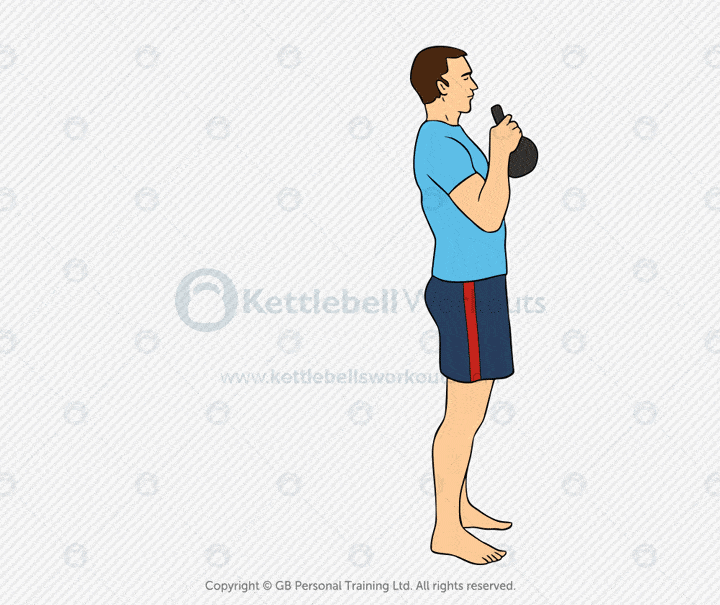

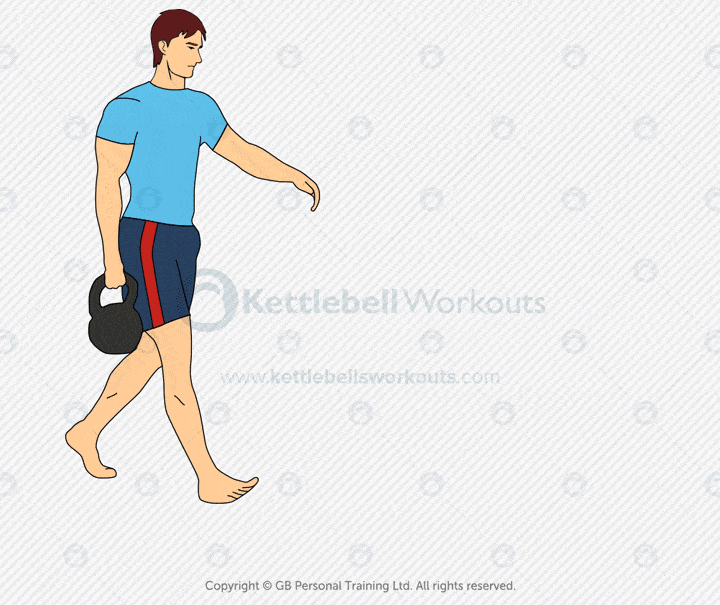
Would having a bicep issue impair your achievement of managing the windmill properly?
Possibly Karen, it all depends on your mobility and stability in the position. Practice without a kettlebell first and see how you get on.
I tried it earlier as part of S&S warmup(after halos)…
and now my back feels SORE.
Must be because of wrong mechanics and/or weak muscles on the area.
Yes you should not feel it in your back, practice the exercise without a kettlebell and also with the kettlebell in the bottom hand first. Only 5 reps each side. Best of luck.
Excellent, thanks.